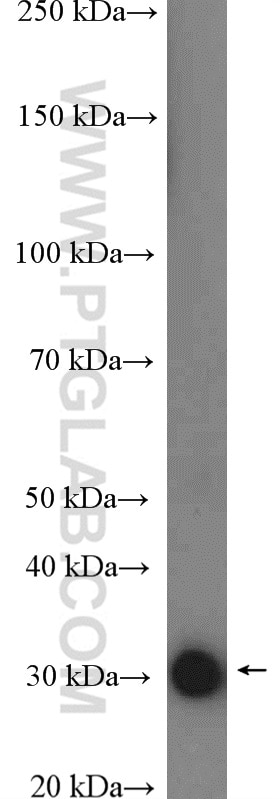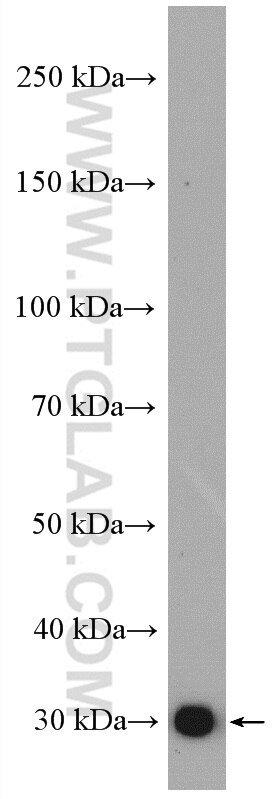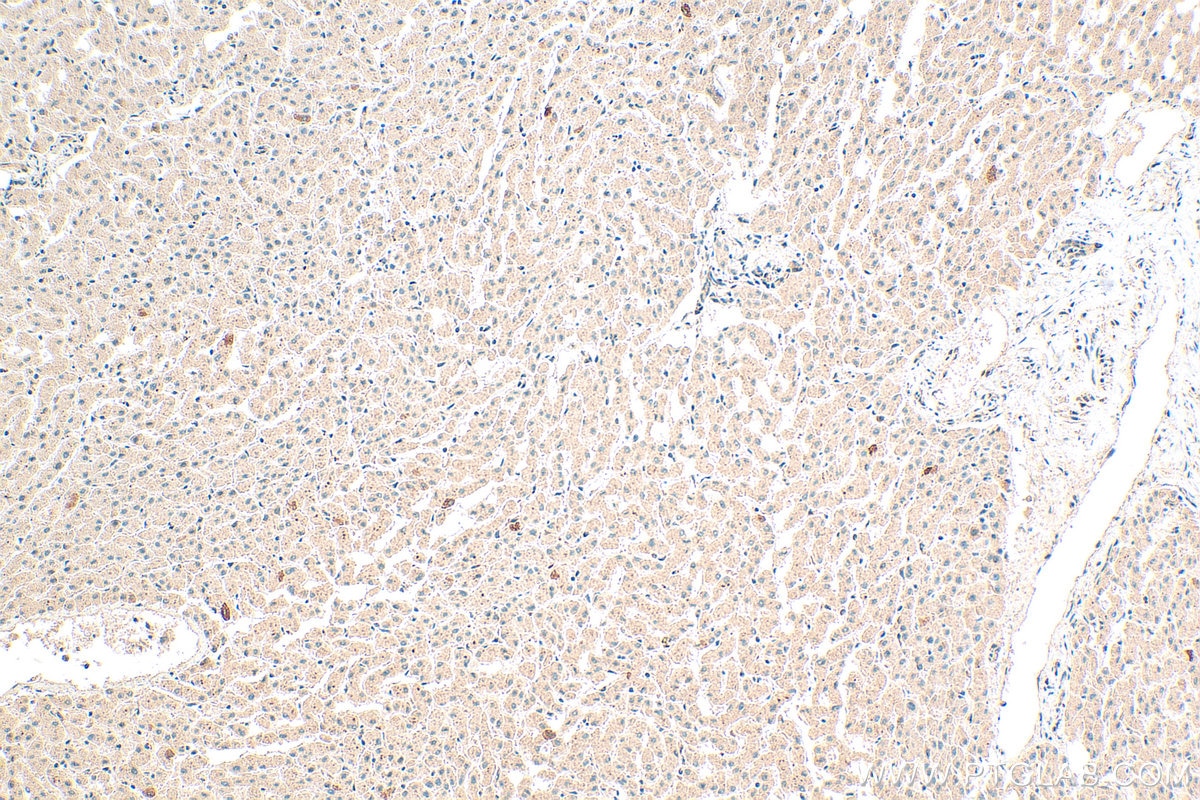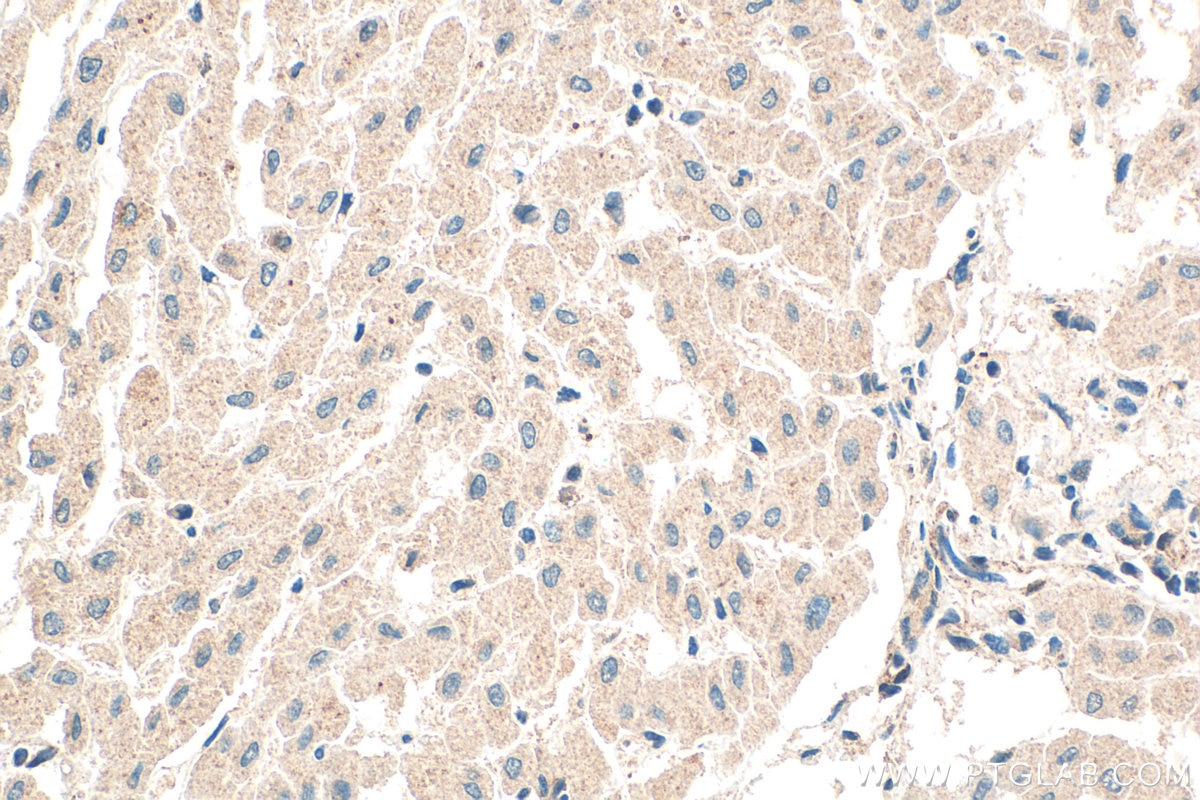Tested Applications
| Positive WB detected in | human plasma tissue, HepG2 cells |
| Positive IHC detected in | human liver tissue Note: suggested antigen retrieval with TE buffer pH 9.0; (*) Alternatively, antigen retrieval may be performed with citrate buffer pH 6.0 |
Recommended dilution
| Application | Dilution |
|---|---|
| Western Blot (WB) | WB : 1:500-1:2000 |
| Immunohistochemistry (IHC) | IHC : 1:50-1:500 |
| It is recommended that this reagent should be titrated in each testing system to obtain optimal results. | |
| Sample-dependent, Check data in validation data gallery. | |
Published Applications
| IHC | See 1 publications below |
Product Information
16608-1-AP targets APOF in WB, IHC, ELISA applications and shows reactivity with human samples.
| Tested Reactivity | human |
| Cited Reactivity | human |
| Host / Isotype | Rabbit / IgG |
| Class | Polyclonal |
| Type | Antibody |
| Immunogen |
CatNo: Ag9824 Product name: Recombinant human APOF protein Source: e coli.-derived, PET28a Tag: 6*His Domain: 37-326 aa of BC026257 Sequence: TSYGKQTNVLMHFPLSLESQTPSSDPLSCQFLHPKSLPGFSHMAPLPKFLVSLALRNALEEAGCQADVWALQLQLYRQGGVNATQVLIQHLRGLQKGRSTERNVSVEALASALQLLAREQQSTGRVGRSLPTEDCENEKEQAVHNVVQLLPGVGTFYNLGTALYYATQNCLGKARERGRDGAIDLGYDLLMTMAGMSGGPMGLAISAALKPALRSGVQQLIQYYQDQKDANISQPETTKEGLRAISDVSDLEETTTLASFISEVVSSAPYWGWAIIKSYDLDPGAGSLEI Predict reactive species |
| Full Name | apolipoprotein F |
| Calculated Molecular Weight | 326 aa, 35 kDa |
| Observed Molecular Weight | 30-33 kDa |
| GenBank Accession Number | BC026257 |
| Gene Symbol | APOF |
| Gene ID (NCBI) | 319 |
| RRID | AB_2058253 |
| Conjugate | Unconjugated |
| Form | Liquid |
| Purification Method | Antigen affinity purification |
| UNIPROT ID | Q13790 |
| Storage Buffer | PBS with 0.02% sodium azide and 50% glycerol, pH 7.3. |
| Storage Conditions | Store at -20°C. Stable for one year after shipment. Aliquoting is unnecessary for -20oC storage. 20ul sizes contain 0.1% BSA. |
Protocols
| Product Specific Protocols | |
|---|---|
| IHC protocol for APOF antibody 16608-1-AP | Download protocol |
| WB protocol for APOF antibody 16608-1-AP | Download protocol |
| Standard Protocols | |
|---|---|
| Click here to view our Standard Protocols |










